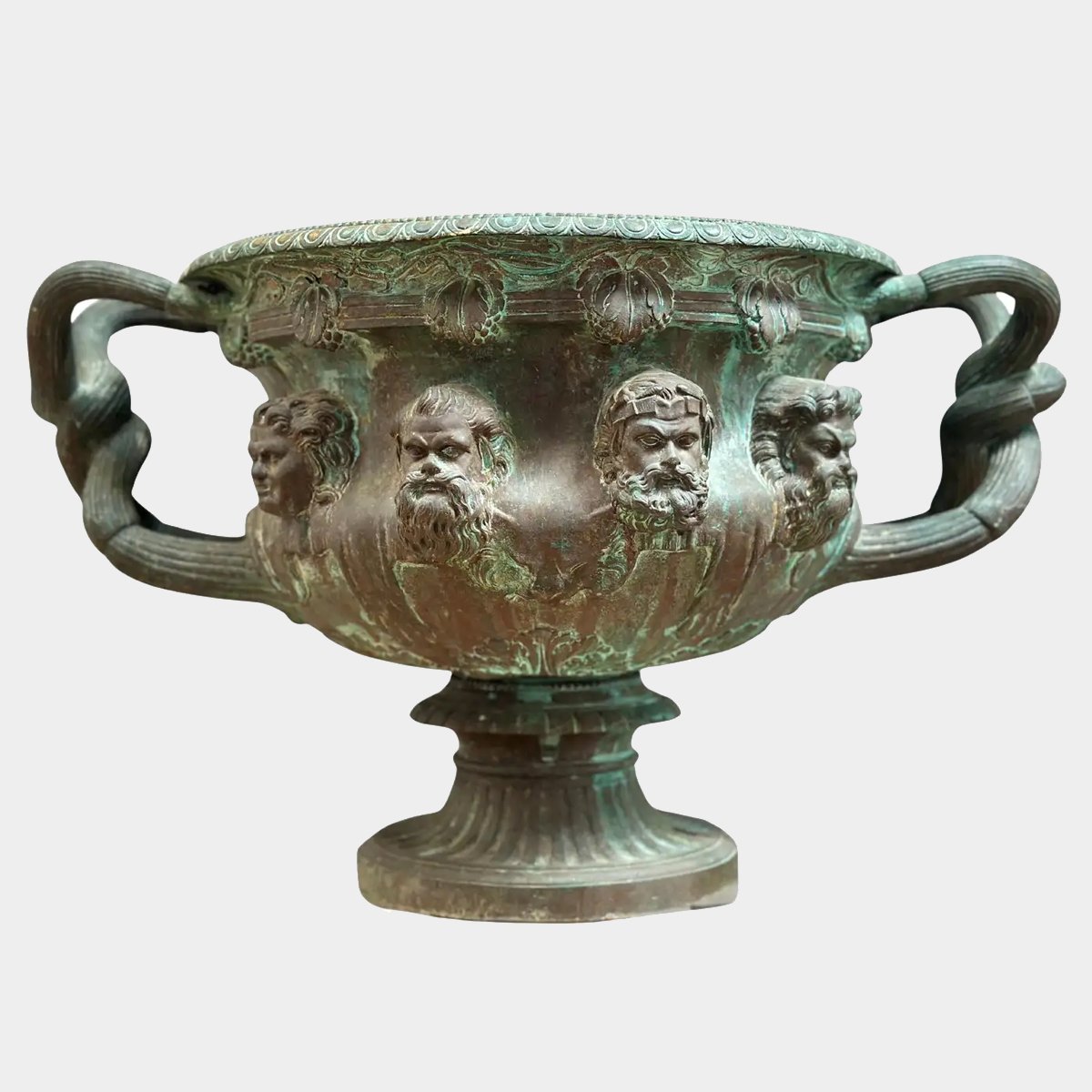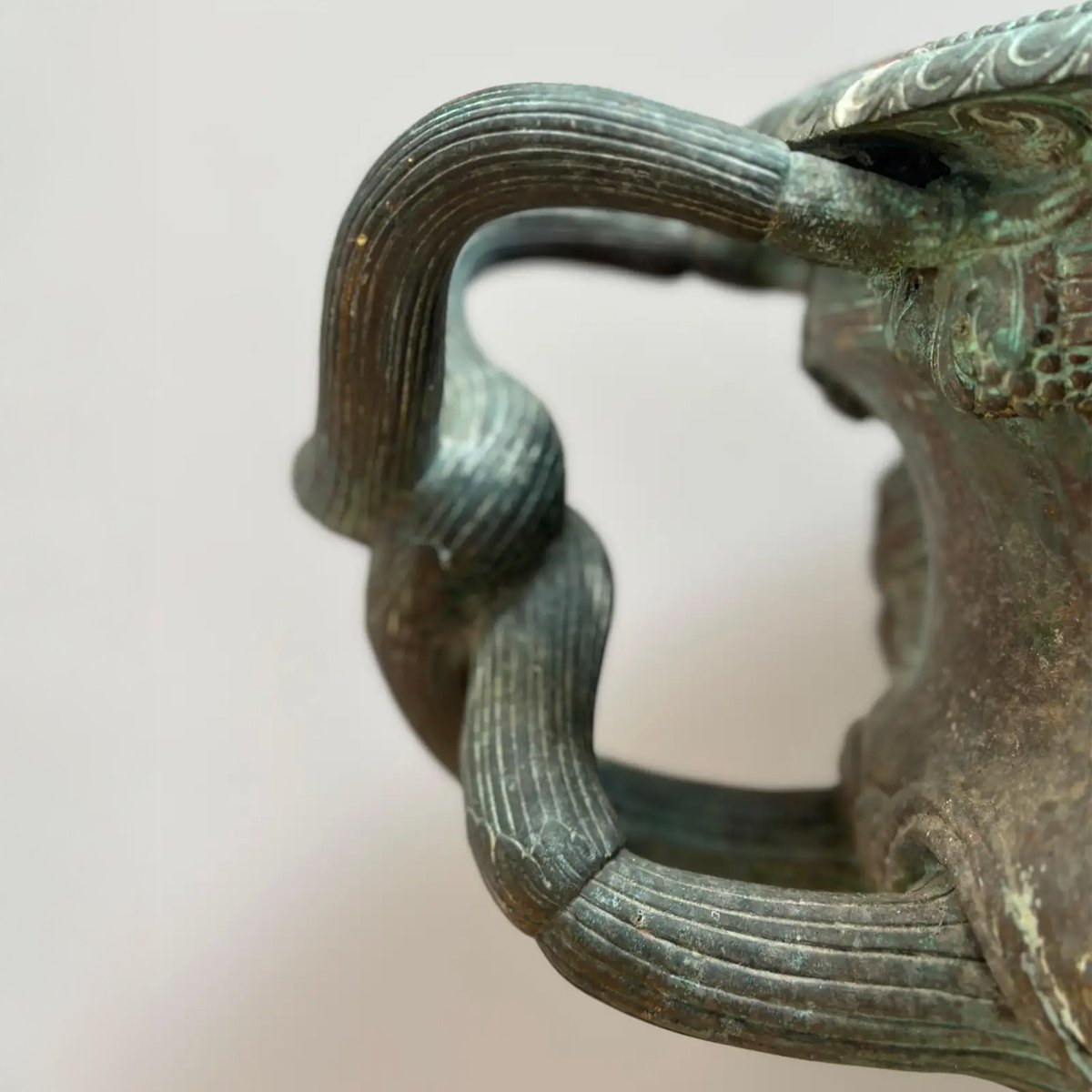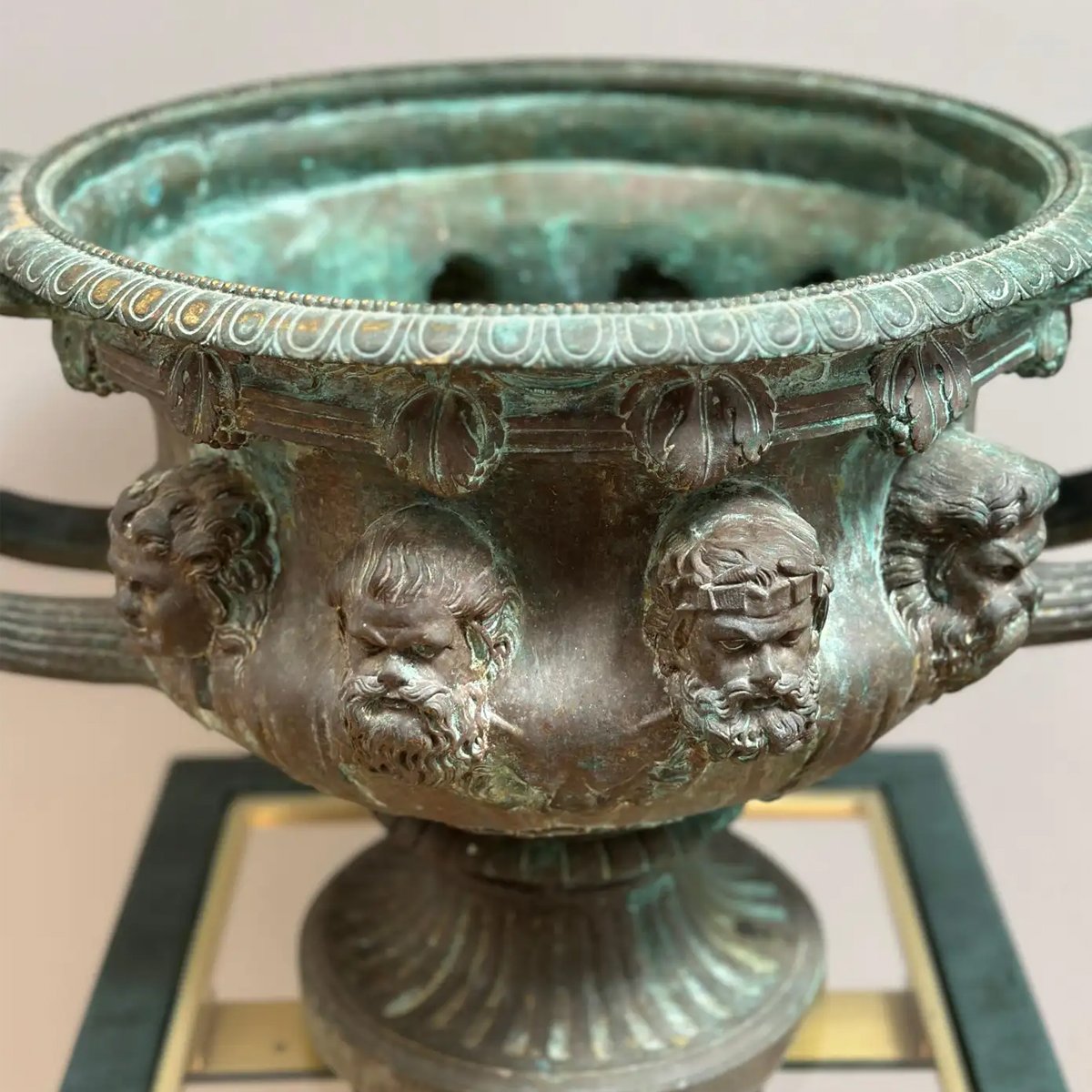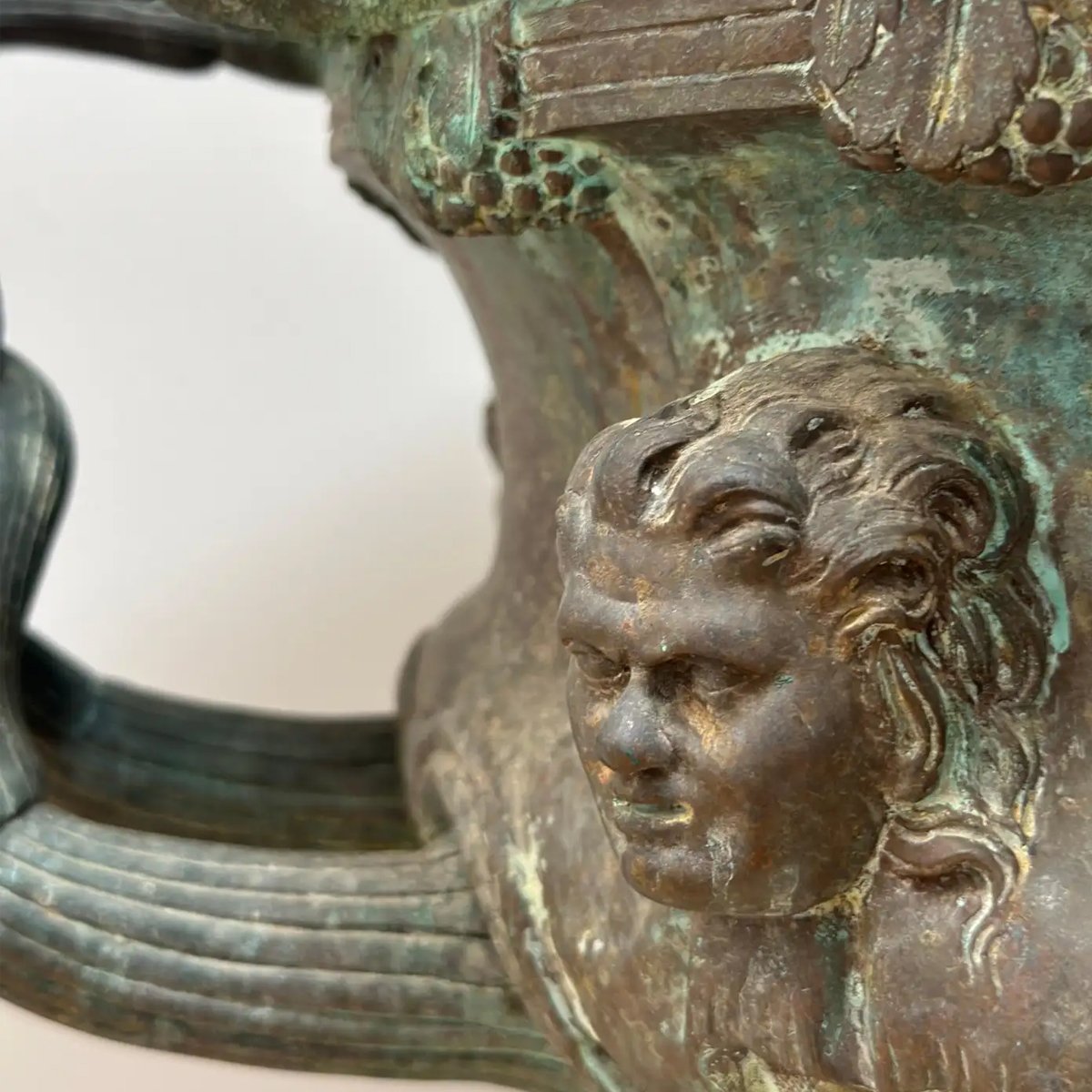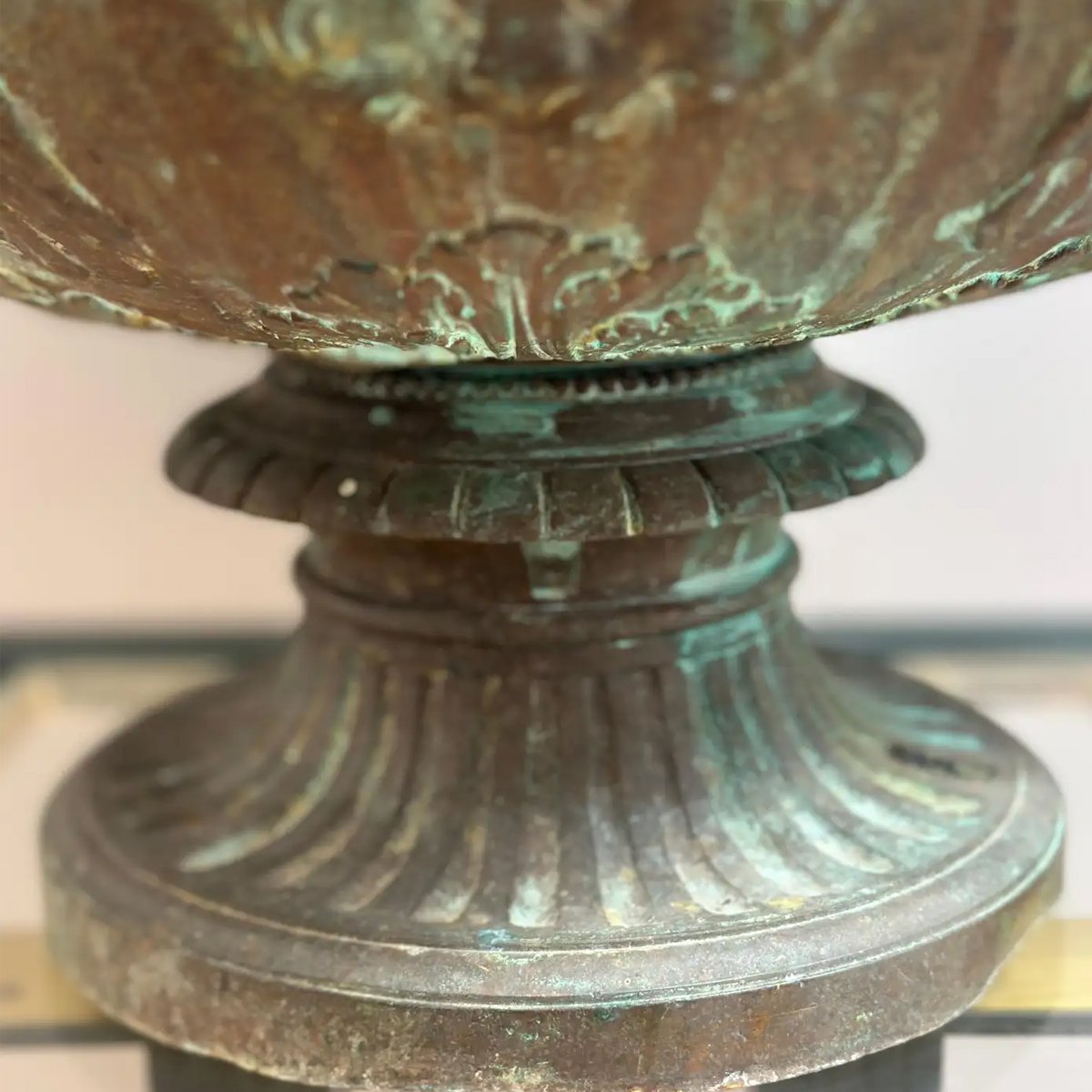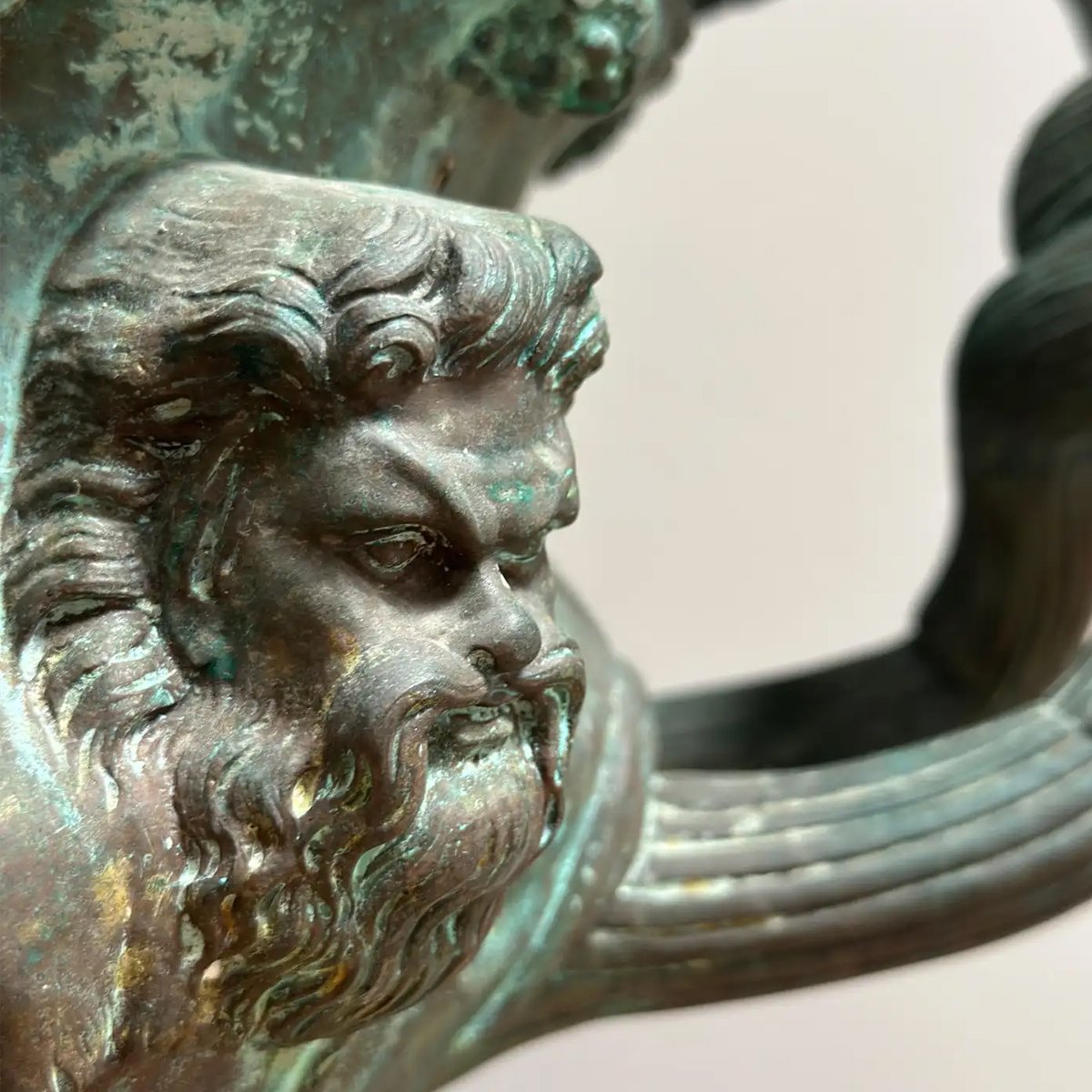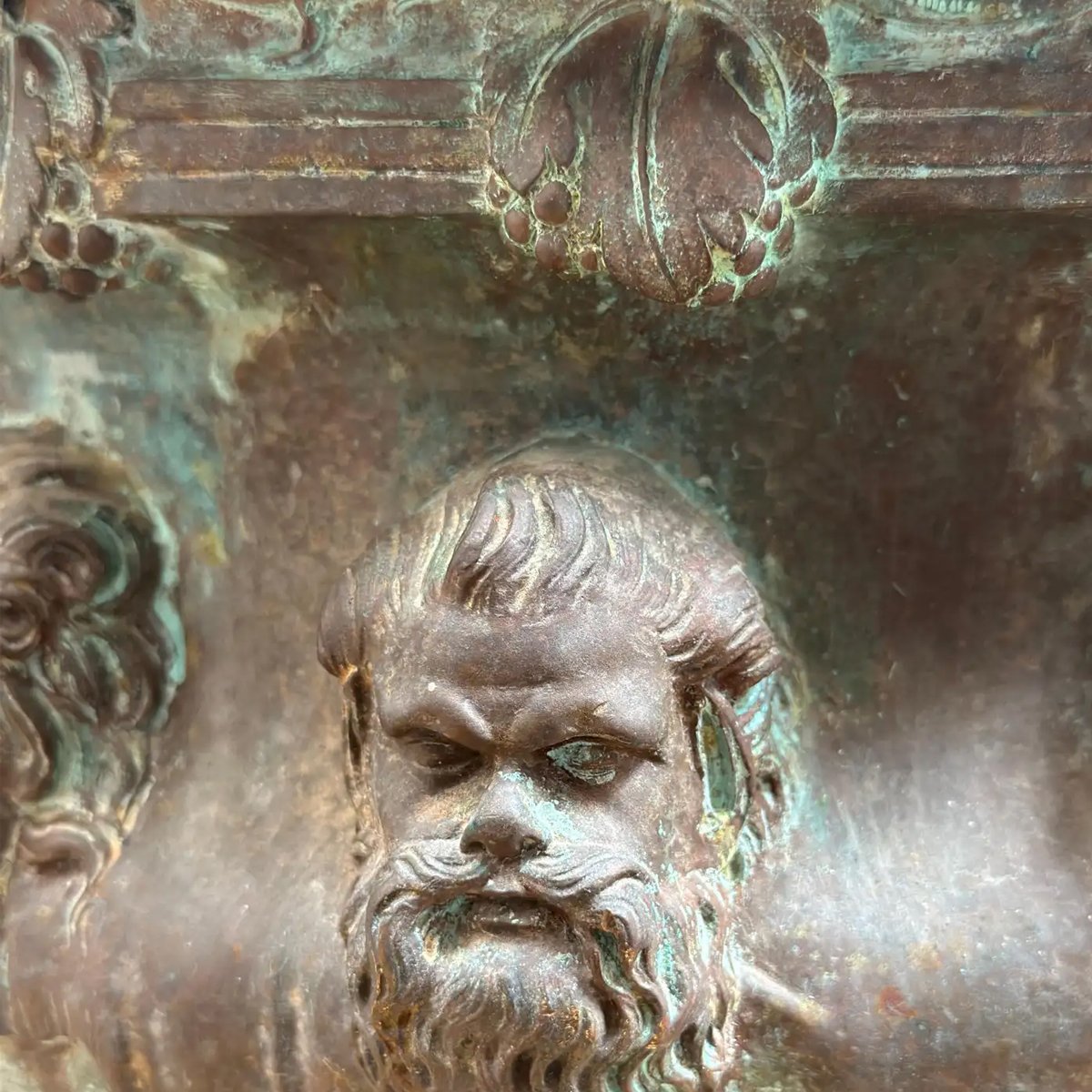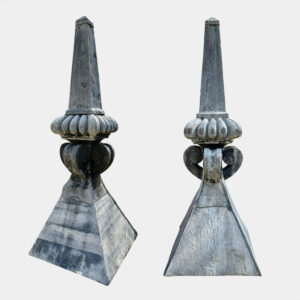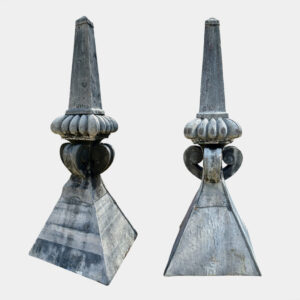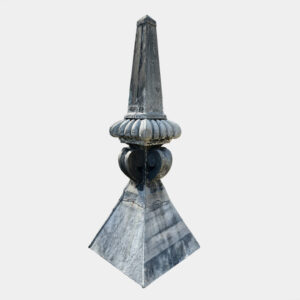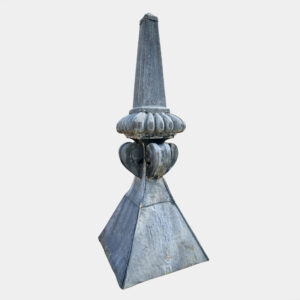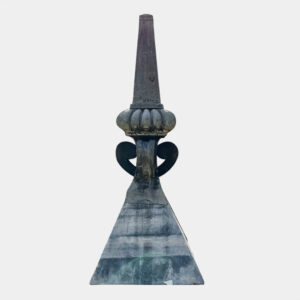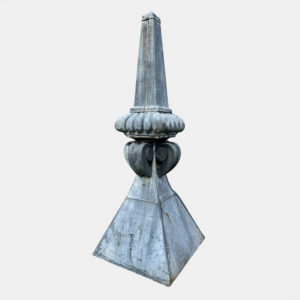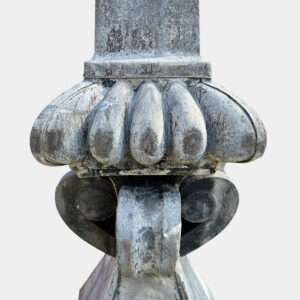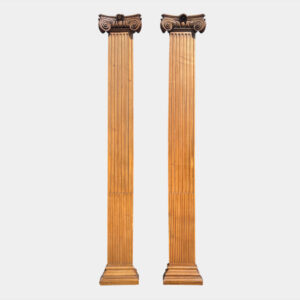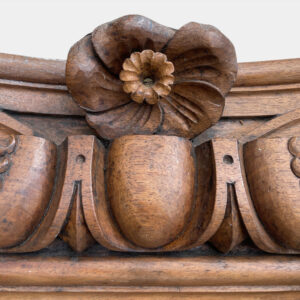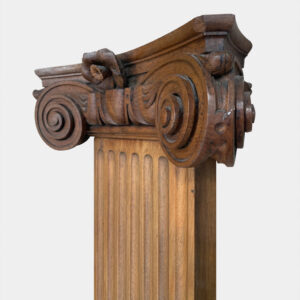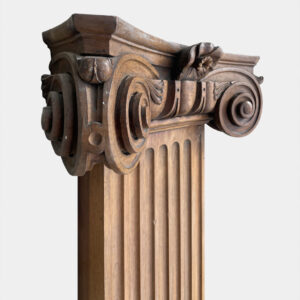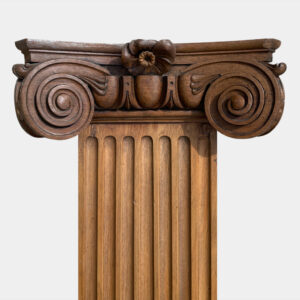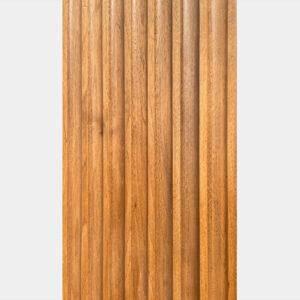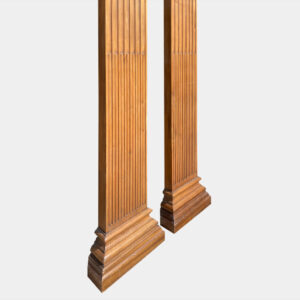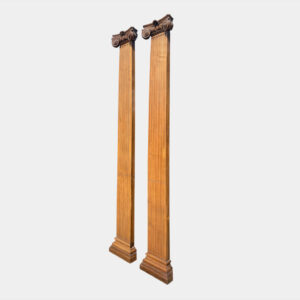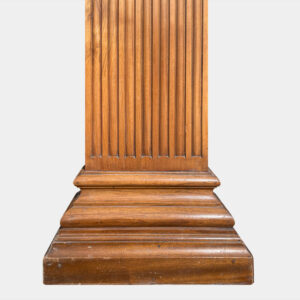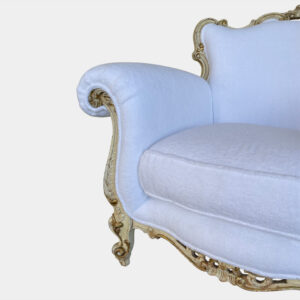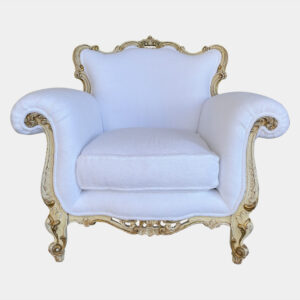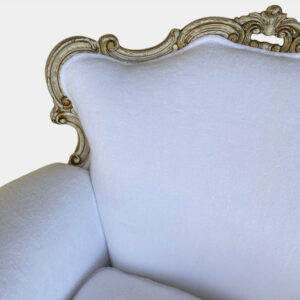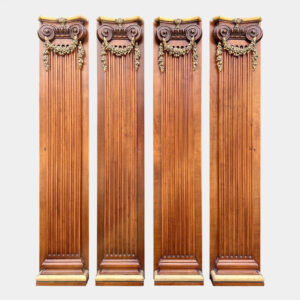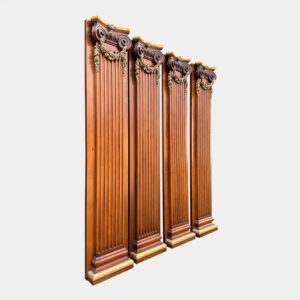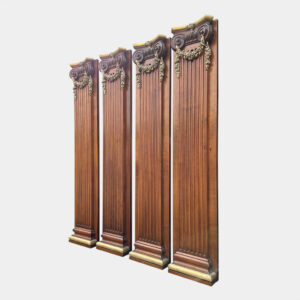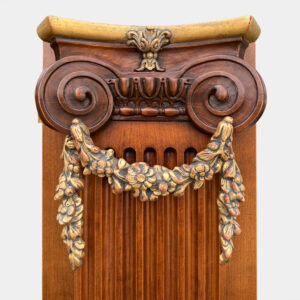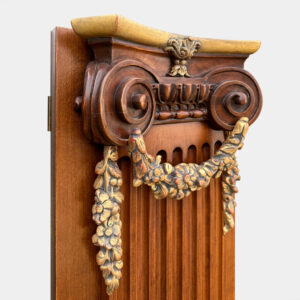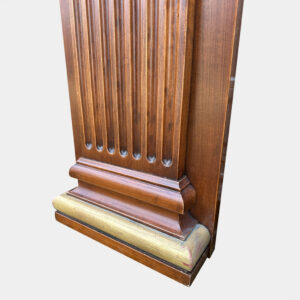An Antique French 19th Century Bronze Warwick Urn
The vase is made of bronze and features a large, bell-shaped body adorned with intricate reliefs. Its design includes classical motifs such as Bacchic (related to Bacchus, the god of wine) figures, grapevines, and satyrs. The handles are particularly notable, shaped like entwined vine branches.
The Warwick Vase is an ancient Roman marble (partially restored) vase with Bacchic ornament that was discovered at Hadrian’s Villa, Tivoli about 1771 by Gavin Hamilton, a Scottish painter-antiquarian and art dealer in Rome, and is now in the Burrell Collection in Glasgow in Scotland.
The vase was found in the silt of a marshy pond at the low point of the villa’s extensive grounds, where Hamilton had obtained excavation rights and proceeded to drain the area. Hamilton sold the fragments to Sir William Hamilton, British envoy at the court of Naples from whose well-known collection it passed to his nephew George Greville, 2nd Earl of Warwick, where it caused a sensation.
The rich ornament, and the form, which is echoed in sixteenth-century Mannerist vases, combined to give the Warwick Vase great appeal to the nineteenth-century eye: numerous examples in silver and bronze were made, and porcelain versions by Rockingham and Worcester. These moulds were sent to Paris, where two full-size bronze replicas were cast, one now at Windsor Castle, the other in the Fitzwilliam Museum, Cambridge. Reduced versions in cast-iron continue to be manufactured as garden ornaments, and in these ways the Warwick Vase took up a place in the visual repertory of classical design. It was the model for the silver-gilt tennis trophy, the Norman Brookes Challenge Cup won at the Australian Open.



